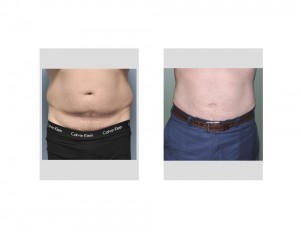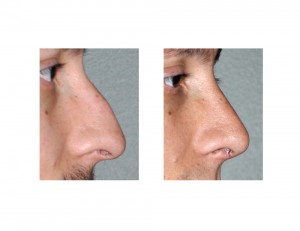Over the last half of the prior century, cosmetic plastic surgery was largely associated with the female gender. From breast augmentation to facelifts, women made up 85% to 90% of the procedures for making one look younger, more fit and to feel better about themselves. Men constituted a minority of the procedures and included eyelid lifts in older men and rhinoplasty in younger men.
But the past ten years has seen the number of men interested in and having cosmetic plastic surgery increase and the old 90:10 women to men ratio change to one closer to 70:30. This has been spurned by a variety of factors including the emergence of the many non-invasive treatments such as Botox, injectable fillers and laser hair removal. But the increase in men has not been driven completely by non-surgical treatments. The number of men having actual surgery has also dramatically increased as society places an increasing value on looking fit and energetic. It is no longer a negative stigmata for men to have surgery as looking good is more valued than how one gets there.
Men now take a greater interest in their appearance than ever before. They not only want to look good dressed but undressed as well. They also want a face that matches their body and helps them look energetic and competitive in the workplace. They work out at home and in gyms, eat more healthy and wear form fitting and fashionable clothing. They work into their later years and retire later. As they get older, their surrounding colleagues become younger. Many are also divorced with younger wives and girlfriends who themselves may have had plastic surgery enhancements.

While the primary goal of all cosmetic plastic surgery is the same, a satisfied patient with a complication-free experience, there are a number of differences between the male and female patient both before and after surgery. When a women comes in for elective plastic surgery, she is usually open to suggestion and recommendations and will often go along with what the plastic surgeon believes is the best course of treatment. This may often be different then what they thought or may be additional procedures to complement their initial request. Many men, however, come in for a very specific treatment and know exactly what they want. They may listen to other recommendations but usually don’t want additional procedures or much of a difference from their preconceived surgical plan.
After surgery, however, is when the greatest differences between man and women exist in plastic surgery. Most people believe that women are more particular in the result and are harder to please. However, that has not been my experience. Contrary to popular opinion, I find men to be much more particular and desirous of further surgical improvement. They are also quick to want to revise an operation even before the final result from swelling and tissue settling has occurred. This has been true whether it is facial or body surgery. But it is not true for all male patients. This is a phenomenon that is most seen in the younger male patient between the ages of 20 to 40 years old. This is likely due to the societal demands that this generation is exposed to and the evolving nature of one’s body and self-image in their younger years.
Dr. Barry Eppley
Indianapolis, Indiana



